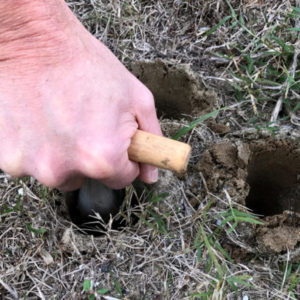Description
 The Praying Mantis Hatching Kit –
The Praying Mantis Hatching Kit –
Makes a Great Holiday Gift! (Shipping Included)
Of all the insects, you could want to take up residence in your garden, by far the most fascinating is the Praying Mantis. This sublimely elegant creature with its eerie triangular face and forearms folded in prayer is a garden icon. If your garden is fortunate enough to have naturally resident praying mantises, then you already know how extraordinary it is to enjoy the companionship of a praying mantis for the season. If you do not have praying mantises in your garden, we are going to show you how to bring these magnificent creatures to your doorstep. If you have not raised praying mantises, you should. This should be high up on your “bucket list”. If you have children, I am going to suggest that it is an absolute MUST.
Praying Mantises are incredibly skilled, aggressive hunters. They eat many different kinds and sizes of insects depending on the mantis’ size and stage of development. Their mode of hunting is usually to ambush their prey, but they have been known to chase especially desirable prey for short distances. Their eyes have a visual range of 50 feet, and they are primarily diurnal, but they have been known to fly at night. This is especially true of males who will fly at night during mating season.
Harvesting History will ship you the Praying Mantis Hatching Kit with a Gift Certificate for 2 Praying Mantis egg cases and a net hatching cage. In the spring, Harvesting History will send you the Praying Mantise egg cases. Place one egg case at a time in your net hatching cage. Within 30 days the praying mantises will begin to hatch. The hatching will take place for several hours. As the Praying Mantises move away from the egg case they must be freed immediately. They are cannibalistic and will eat each other. Once this hatching has finished, put the second egg case in the net hatching cage and begin the process again. Remember, it will take 30 days for the eggs to hatch, but when they do hatch, the nymphs will need small bugs to eat immediately.
Once the mantises hatch, you probably will not see them again until they are adults. Out of an egg case that may have 200-400 eggs, at best 2-3 nymphs will reach the adult stage.
One of the most enchanting summers I ever spent in my beloved Roland Park, Maryland home was the summer of 2002. During that summer, a huge praying mantis (I think it was a female) took up residence on the lampshade of a piece of our porch furniture. Each evening, I would read a book, watch the sun set gently behind the trees on my neighbor’s property and cast clandestine glances at my praying mantis. She, in turn, spent each entire evening ceaselessly staring back at me. She was there every single night until one evening in early autumn when she disappeared, never to return again. Our friendship had finished for her, and the responsibilities that Nature had delegated to her had to be fulfilled away from that lampshade.





